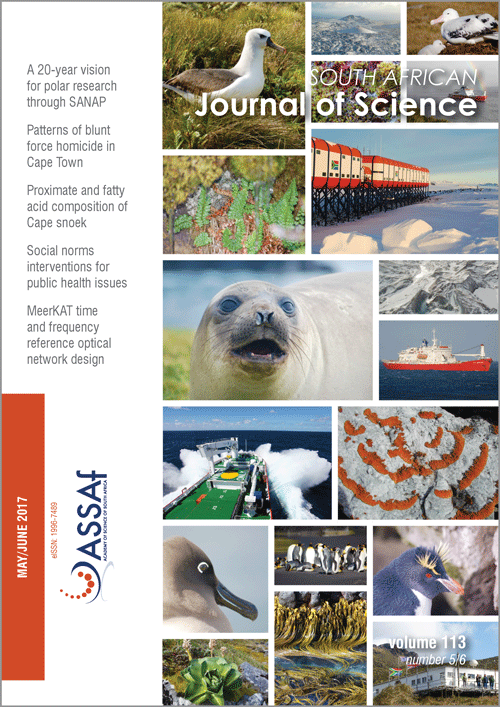Proximate and fatty acid composition of cooked South African Cape snoek (Thyrsites atun)
DOI:
https://doi.org/10.17159/sajs.2017/20160161Keywords:
eicosapentaenoic acid, docosahexaenoic acid, protein content, boiling, snoekAbstract
Cape snoek (Thyrsites atun) is an important source of protein for people in South Africa; however, nutritional information thereof is limited. The proximate and fatty acid compositions of raw and cooked (80 °C) snoek muscles were determined according to official AOAC methods. The mean moisture, ash, total lipids and protein for raw snoek were 72.8±1.86%, 1.3±0.09%, 4.0±1.16 and 21.5±1.35%, respectively. Cape snoek is very high in palmitic acid (24.65±1.43%), oleic acid (18.21±2.64%), eicosapentaenoic acid (EPA, 9.11±2.06%) and docosahexaenoic acid (DHA, 19.70±3.25%). With the exception of total lipids, cooking significantly reduced moisture (69.40±2.03%) and ash (1.12±0.12%), and increased protein (24.47±1.39%) content. It is concluded that Cape snoek is very high in protein and can be classified as a low-fat fish which is rich in EPA and DHA.
Significance:- Cape snoek is a low-fat fish, containing less than 4% fat, and is high in EPA (9.11±2.06%) and DHA (19.70±3.25%).
- Cape snoek is thus a healthy, cheap and high-protein food source, with a high content of omega-3 fatty acids.
Published
Issue
Section
License

All articles are published under a Creative Commons Attribution 4.0 International Licence
Copyright is retained by the authors. Readers are welcome to reproduce, share and adapt the content without permission provided the source is attributed.
Disclaimer: The publisher and editors accept no responsibility for statements made by the authors
How to Cite
- Abstract 482
- PDF 1064
- EPUB 215
- XML 237












.png)